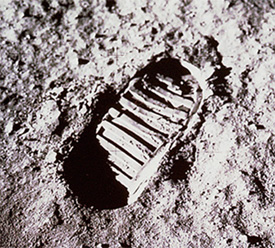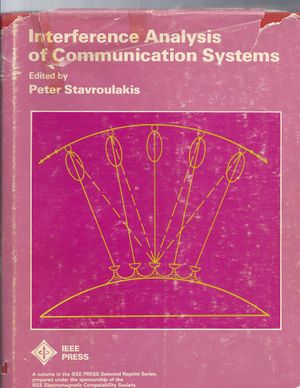First-Hand:Apollo Project by Stavroulakis

Submitted by Peter Stavroulakis
I am a life senior member of IEEE for 50 years since 1969!! having been educated in USA and worked at BELL labs when BELL LABS was advertised in the technical Journals internationally as "the research center which has more Nobel Prizes than HARVARD and CAMBRIDGE combined".
Besides BELL LABS I worked at Oakland University Michigan as an Associate Professor of Engineering and later as an International Director of Technology for NYNEX (one of the baby bells when ATT was broken up) stationed in Geneva, Switzerland. I will describe for you some of my achievements which might be related to the Apollo Project as it is advertised in the recent IEEE message as shown below.
I would like to describe to you some of my research activities on Satellite Communications in order to give you some data to judge if this is related to the apollo project. This research was finalized a few years after the landing on the Moon and you may decide that it was not used in the Apollo project and it is irrelevant to the IEEE message below.
My Project as a member of the Satellite design team at Bell Labs involved the following.
The SHAH of Iran at that time signed a very large contract with ATT to design and Implement a domestic IRAN satellite system.
Near the end of our design we found out that we could not design and implement satellite antennas on time to illuminate entirely the Territory of IRAN without overspilling interference signals to then neighboring superpower Soviet Union if the satellite of IRAN ought to be located within 5 degrees away form existing soviet satellites. The 5 degree satellite orbit interspacing was an ITU rule and a must.
I was given at Bell Labs the assignment to solve the problem. I did try to first of all to find out where the 5 degree requirement came from. It was after visiting ITU in Geneva Switzerland that I found that this requirement was a result of simply an Engineering Judgement. After that I made a search and studied all research results on intersystem Interference and published the only existing Reprint book on this subject. Then I tried to study the problem at hand and solved the problem based on technical data and innovative math techniques and not on Engineering Judgement, My entire research results were published in a relevant conference with a title.
This paper showed for the first time that it can be proven that the satellite orbit interspacing is safe even at the 3 degrees interspacing . The results of my research was accepted by ITU on time and we proceeded to finalize the design of the domestic satellite system of IRAN. We submitted the entire design based on my approved research results to the SHAH by the end of January of 1979 to proceed to the implementation as the original contract demanded.
A Month later the SHAH was dethroned and all the investment was lost and the domestic satellite pf IRAN was never implemented. This is probably the reason why my research and my paper never made the first pages of the international technical Journals even though it had such an international impact. Since then the international orbit satellite interspacing approved by ITU is 3 degrees.
Further Reading
A Statistical Approach to the Interference Reduction of a Class of Satellite Transmission Systems, December 11, 1978, Bell Labs Technical Memorandum
Interference Considerations for an Optimal Geostationary Orbit Utilization by the Iranian Satellite System, August 16, 1977, Bell Labs Technical Memorandum
Back to Human Space Travel Primary Sources
